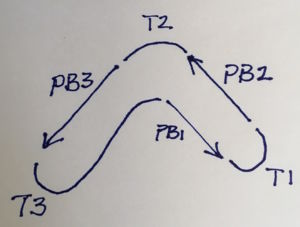Polygalacturonase
From Proteopedia
|
--MDY -- this is a bit confusing. PG's are found in bacteria, fungi, plants, and animals. Plant PG's are involved in fruit ripening. Bacteria and fungal PG are involved in plant pathogenesis, often acting as plant virulence factors and involved in some of the initial pathogenic effects through their action of degrading the plant cell wall. -- MDY
Contents |
Function
Polygalacturonases hydrolyze α-(1-4) – glycosidic bonds between consecutive galacturonic acid residues in polygalacturonic acids. Structural variation has been identified among differing PGs depending on organismal origins and catalytic functions. For example, endo-polygalacturonases produced from Erwinia carotovora demonstrate functional similarity to pectate lyases in that they cleave polygalacturonic acids in a calcium-depended manner via β-elimination (crystal structure).
MDY -- we need to distinguish between pectate and pectin. Pectate is a galacturonate polymer, pectin has a polygalacturonate backbone, but some of the monomers are methylesterified on the sixth carbon. PG acts on pectate, not pectin -- MDY
Disease
Relevance
Structural highlights
The secondary structure of PGs is comprised of a ten turn right handed beta helix domain along with two loop regions that together form the substrate-binding cleft, which appears to have a tunnel-like shape. The active site of PGs is found between the two looped regions of the protein. Located within the looped regions are two conserved aspartate residues that are predicted to participate in catalytic activity (crystal structure).
MDY- a right-handed parallel beta helix is a tertiary fold. The secondary structure is the beta and the alpha structure. If you describe how the secondary structure folds in space, that becomes tertiary structure. The secondary structural elements of the core fold of the proteins are only beta structure, the beta strands form parallel beta sheets. There are three main parallel beta sheets, PG's often have a smaller parallel beta sheet of only three-four beta strands.
Not all PGs have ten coils in the parallel beta helix. They usually have approximately 10 coils.
--MDY
References
Proteopedia Page Contributors and Editors (what is this?)
Joel L. Sussman, Krishna Amin, Michal Harel, Marilyn Yoder, OCA, Jaime Prilusky

